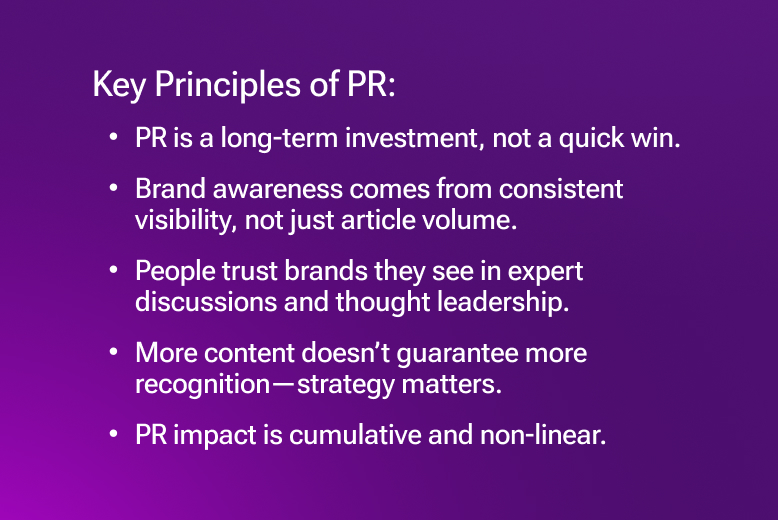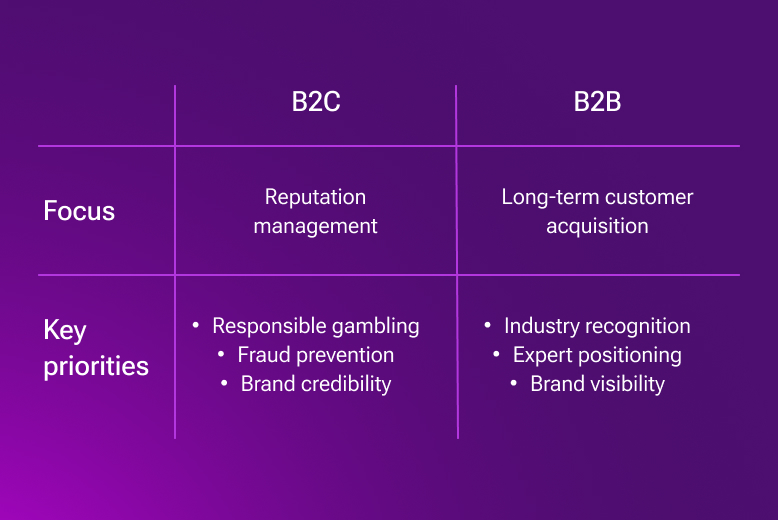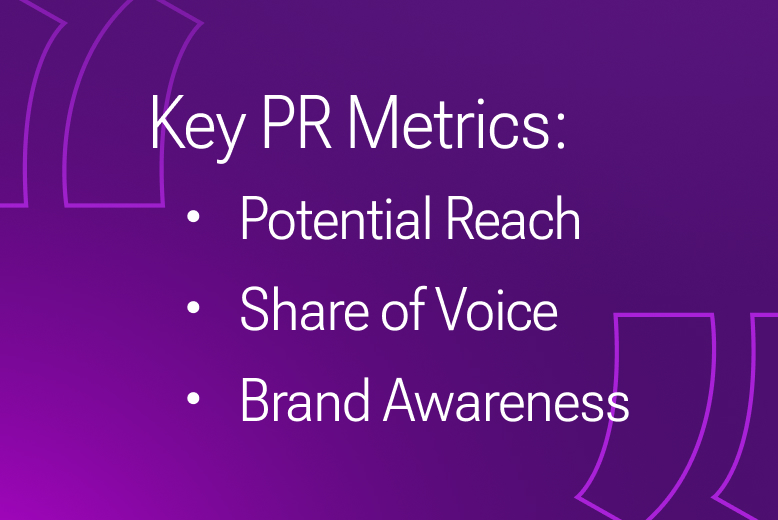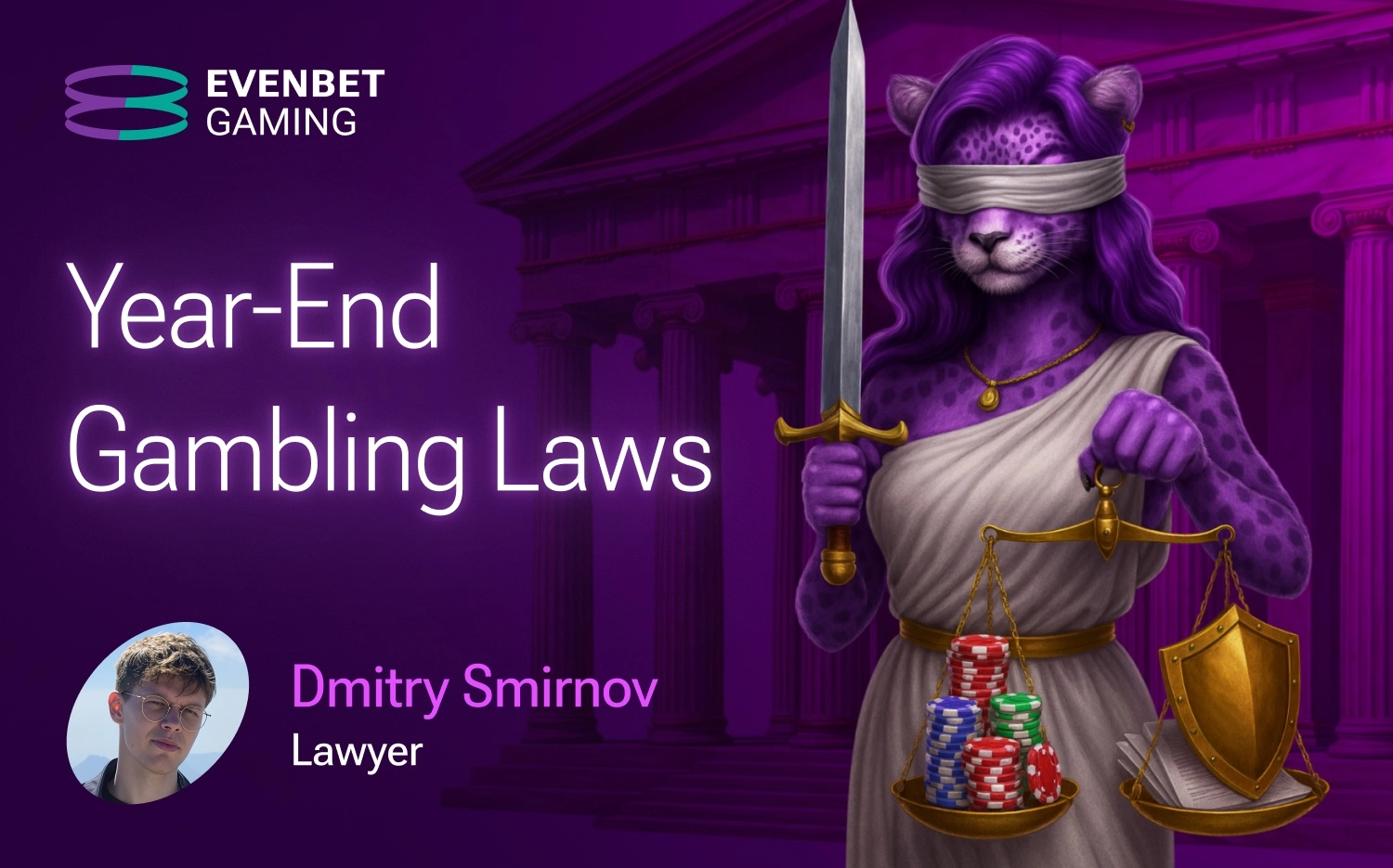Public relations in iGaming isn’t just about visibility — it’s about overcoming barriers. The industry operates under strict advertising restrictions, making traditional marketing channels unreliable or even inaccessible.
In this environment, PR becomes a key tool for brand awareness, credibility, and long-term business growth. But PR in iGaming isn’t as simple as publishing a few articles and expecting results. It’s a continuous, strategic effort that requires smart messaging, the right media partnerships, and a deep understanding of how to position your brand in a complex and often misunderstood industry.
In this article, I’ll share insights from our experience at EvenBet Gaming on what works, what doesn’t, and how to make PR a powerful driver of business success.
Breaking the Industry Bubble
The iGaming industry has a well-established network of specialised media that focus specifically on gambling as a business. Building relationships with these outlets is relatively straightforward — they are always open to collaboration with companies that can provide valuable insights and compelling news.
However, our industry exists within a self-imposed bubble — not by choice, but by circumstance. The barrier around gambling was built by external forces, not by us. Mainstream business publications tend to cover iGaming only when there’s controversy: social issues, regulatory crackdowns, or major cybercrime incidents involving online casinos. Positive stories about successful gambling businesses rarely make it into general business media.
In this regard, iGaming shares similarities with the adult entertainment industry — another highly stigmatised sector. Major news outlets that protect their reputation won’t publish stories about successful porn platforms, nor will they accept advertising from them. Yet, adult content companies still manage to generate media coverage that isn’t purely negative. They do this by providing unique data and insights — such as regional viewing preferences — that journalists find interesting enough to cover.
iGaming companies can adopt a similar approach. Instead of only talking about our products and services, we can act as sources of valuable industry data and insights, creating stories that appeal to journalists outside the gambling niche. This method not only increases media exposure but also helps reshape perceptions of our industry.
We experienced this first-hand with our Core iGaming Trends and Challenges report. To our surprise, it caught the attention of non-gambling media, resulting in coverage from outlets that don’t typically write about iGaming. While they weren’t the largest publications, this was still a breakthrough — one that proved it’s possible to reach a wider audience with the right approach.

Moving forward, we plan to create more content that is both useful to our core audience and relevant beyond the iGaming sector. For example, we’ve built extensive expertise in HR management and branding, and we’re ready to share our knowledge. By diversifying our content strategy, we aim to expand our reach and contribute valuable insights that go beyond the boundaries of our industry.
What Drives PR
Public relations isn’t a quick win — it’s a long-term commitment that demands consistent investment of resources. It’s not as simple as publishing an article and expecting an immediate surge in leads. Nor is PR a numbers game where more articles automatically translate into more clients. Instead, it’s about building brand recognition and ensuring that when someone thinks, “I need a poker solution,” our company’s name comes to mind first.
People trust brands they frequently encounter in industry discussions, expert commentary, and thought leadership pieces. The goal of PR is to create that familiarity — so that when decision-makers need a reliable poker supplier, they instinctively think of us.

More content doesn’t necessarily mean greater visibility. Two articles won’t double brand awareness compared to one. What truly matters is quality: a well-crafted strategy aligned with key industry events and company milestones. PR works cumulatively, and its impact is non-linear.
We experienced this first-hand in 2023, a year where we deprioritised PR, shifting our resources towards social media and events. As a result, our media presence dropped, and so did key PR-related metrics. But the real wake-up call was the ripple effect: a decline in branded search queries and a noticeable dip in lead quality. While the year was financially stable for the company, it wasn’t our strongest.
That experience reinforced a crucial lesson — PR isn’t just an optional extra; it’s a fundamental pillar of long-term brand strength and business growth.
PR as an Internal Effort
PR isn’t just about external media coverage — it requires deep internal engagement within the company. That’s because PR is, at its core, promotion through people. One of the biggest trends in modern business communication is the human-to-human approach, and in PR, this principle is more relevant than ever.
A brand doesn’t speak on its own — it always speaks through individuals. Audiences don’t want to engage with a faceless company; they want to hear from real people with expertise, opinions, and unique perspectives. A strong PR strategy ensures that when our company communicates, it does so through recognised voices that industry professionals trust.
For this approach to work, everyone involved in external communications must understand the value of PR and their role in shaping the company’s reputation. PR isn’t just about writing an article, publishing it, and moving on. It’s about consistent, long-term engagement.
Our experts, executives, and spokespeople need to be actively involved—not just through occasional interviews or a handful of articles per year but as ongoing voices in the industry. This includes:
- Regularly sharing insights on social media — building personal and corporate credibility.
- Participating in industry discussions — whether through expert commentary, guest articles, or speaking engagements.
- Maintaining consistency — because PR loses its impact when communication becomes sporadic.
When experts stop engaging, when media coverage becomes inconsistent, and when thought leadership efforts aren’t sustained, brand visibility weakens. In PR, rhythm is everything — without it, the impact fades quickly.
Building and maintaining a strong presence requires ongoing effort, but when done right, it turns a company from just another name in the industry into a recognisable, trusted authority.
B2B vs B2C PR in iGaming
PR in iGaming isn’t one-size-fits-all — it plays vastly different roles in B2B and B2C segments. Understanding these differences is key to crafting an effective communication strategy.

B2C PR in iGaming
For B2C operators, PR is primarily about reputation management. The gambling industry often faces negative perceptions by default, with concerns around fraud, payments, banking transactions, and cybersecurity risks.
In this space, PR efforts focus on positioning the brand as a responsible and trustworthy operator — one that champions responsible gambling, manages risks effectively, and protects players from fraud. The goal isn’t just visibility but credibility, ensuring that players see the operator as safe and ethical.
B2B PR in iGaming
On the B2B side, PR plays a different role: it’s a long-term strategy for client acquisition. Unlike operators, who don’t attract players directly through PR, providers and aggregators rely on it to build industry recognition.
The objective isn’t immediate lead generation but ensuring that when operators need a new solution, they already know which providers to trust. A strong PR presence in B2B means being consistently visible in industry discussions, thought leadership content, and expert commentary — so that when decision-makers are ready to invest, they instinctively turn to familiar, well-regarded companies.
Measuring PR Effectiveness: Key Metrics for iGaming
How do you measure the success of PR in iGaming? Unlike performance marketing, where results are often immediate and quantifiable, PR works as a long-term strategy. However, that doesn’t mean its impact can’t be tracked. Here are three key metrics to assess PR effectiveness.
1. Potential Reach: Who Could See Your Message?
The first step is to evaluate potential audience size. This means looking at the traffic of media outlets where your content appears, the distribution of print materials, and other exposure factors. It gives an estimate of how many people could have seen your message.
However, reach alone isn’t enough — it’s essential to consider audience quality. Are you appearing in the right regions? If your goal is to strengthen your brand in Brazil, publishing in a European-focused outlet won’t help. Ensuring alignment between media readership and your target audience is crucial.
Practical approach: we’ve created an established system of the reach coefficients for media publications, taking into account the audience size, its quality, and the role our brand or spokesperson plays in the piece published. This allows us to simplify regular calculations.
2. Share of Voice: How Do You Compare to Competitors?
Share of voice (SOV) measures how much media coverage your brand gets compared to competitors. This involves tracking mentions across a set period and calculating your company’s share of total industry coverage. A higher SOV means stronger visibility, making it easier for potential clients and partners to recall your brand.
By regularly monitoring this metric, you can see whether your PR efforts are helping you stand out or if competitors are dominating the conversation.
Practical approach: the simplest way to calculate SOV is to count the number of news and articles published within a month for each of your competitors and then define their share. If you want more precise data, you will also have to calculate the reach for each of them, and this will require some degree of automation.
3. Brand Awareness: Do People Recognise Your Brand?
Brand awareness goes beyond numbers — it’s about perception. Do industry professionals recognise your company name? Can they identify your logo? Do they associate your brand with your specific vertical in iGaming?
Surveys, industry polls, and direct feedback from potential clients can help gauge brand recognition. The stronger the brand awareness, the more likely decision-makers will think of you when they need a solution.
While PR’s impact isn’t always immediate, these three metrics provide a solid framework for evaluating whether your efforts are driving long-term visibility and credibility in the industry.
Practical approach: the easiest way to start measuring brand awareness is by estimating your listed BA. Create a list of your direct competitors and ask your target audience which brand names they recognise. For the result to be trustworthy, you need to reach at least 1% of your potential audience and keep the survey anonymous.

Brand Awareness in B2B iGaming
Brand awareness is arguably the most complex PR metric to measure — especially in B2B iGaming. Unlike website traffic or media mentions, it can’t be tracked with simple analytics. Instead, it requires extensive research, including surveys and data collection, making it both time-consuming and resource-intensive. This is why most companies turn to specialised agencies for help.
However, when we set out to measure our brand awareness, we encountered an unexpected challenge: no one in the industry had ever done it before — not our media partners, not our industry contacts, not even the research firms we spoke to. While B2C brands in iGaming have made some progress in this area, B2B companies are still at the starting line.
This gap exists partly because the B2B segment of iGaming is still relatively young. Unlike consumer-facing brands, which can rely on large-scale surveys and public sentiment analysis, B2B companies operate in a niche market with a smaller, highly specialised audience. We quickly realised that there was no established methodology for measuring brand awareness in our space.
Faced with this, we had to build our approach from scratch — developing a methodology, identifying data sources, and experimenting with tools for collecting insights. Our first attempt yielded a limited dataset, but it gave us a clearer picture of which industry brands were recognised, which logos stood out, and how well-known different companies were. It was a starting point.
We’re now refining our methodology to improve data collection and accuracy. While we don’t yet have a perfect system, we’ve made significant progress. Most importantly, we’ve proven that measuring B2B brand awareness in iGaming is possible — it just requires a new way of thinking.
Conclusion
PR in iGaming is a long game. It doesn’t deliver instant leads or sales, but it builds something even more valuable — brand recognition and trust. To succeed, companies need to think beyond simple media coverage. It’s about creating meaningful narratives, engaging with the right audiences, and positioning your company as a leader in the industry.
Most importantly, PR is not a standalone effort; it requires internal commitment, expert involvement, and consistency. When done right, PR doesn’t just help a company be seen — it ensures that when industry decision-makers think about their next business move, they think of you.
























